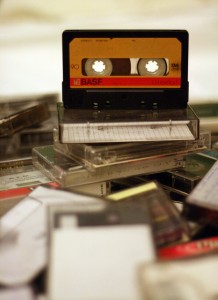
It does not matter if you are making use of music, images, or plain video files; everyone needs to understand what various types of formats are and how to use them. By this we mean, by using the right format, you can retain a file’s audio and visual quality without making it too big in size.
Many people prefer to make use of lossless music files. Lossless are the files that reproduce exactly what you have on CD without any loss in quality. It can also offer its users high resolution with sample rates superior to that of CD.
One of the major benefits of lossless files is that when it is decompressed, it becomes a replica of digital downloads or CD. Once you rip a CD to lossless and play it back on any software you desire the file will be converted into the exact same digital stream as was on the original CD.
What Is the Difference between Lossy and Lossless Formats
RAW format is what we refer to as Lossless format because it preserves the file’s original data. While you may call JPEG lossy format as some data is always lost when we covert it to JPEG format. Here are some more examples of the lossy and lossless formats.
- Images in GIF and JPEG formats are lossy, while PNG, BMP and Raw are lossless formats for images.
- Audio files in OGG, MP4 and MP3 are lossy formats, while files in ALAC, FLAC and WAV are all lossless.
Some lossless formats also offer compression. For instance, WAV is entirely uncompressed but takes up a lot of space. ALAC and FLAC are lossless audio files that have the same data as the WAV file. These files use a type of compression to make smaller sized files. These two formats also retain all the data while compressing. But these are still bigger than the MP3 files. MP3 files omit a lot of data.
Should Lossy Be Converted To Lossless
Now it makes sense that we only right the digital wrongs, and convert back all our lossy audio files back to lossless, but unfortunately, it does not work that way. When you rip from an audio CD to an MP3 file, which is a lossy format, you lose a lot of data. Now when you convert it to, say, a lossless format like FLAC, you are only getting a bigger sized file and none of the data is lost. The new audio file will be just as good as the MP3 file is.
Now it is also a bad idea to convert lossy files into other types of lossy files. More data is thrown away. It is like taking a photocopy of a photocopy, as none of the copies are as good as the original.
But if you plan on converting the lossless formats to lossy directly, then that could work well for you. If you rip an audio CD to FLAC, you will end up with a file that is just as good as the CD.
